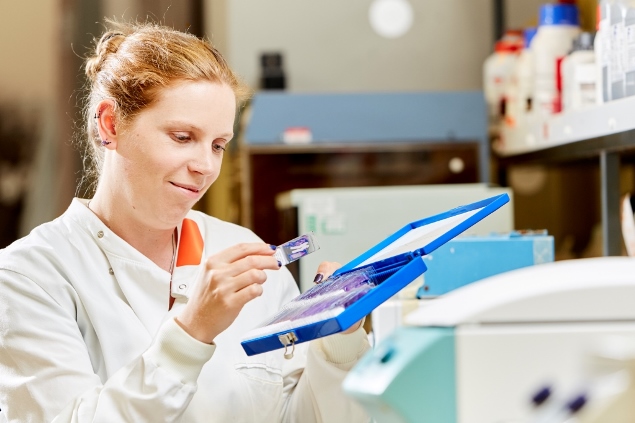
Case Study
Best foot forward for technology
Date: February 24, 2020
Collaboration with clinicians and NHS Blood and Transplant is enabling the evaluation of an existing technology to help prevent foot ulcers in diabetic patients.
Nerve damage caused by diabetes can cause the foot to change shape, losing fatty areas that provide protection to the bones. The increased pressure on the skin can lead to ulcers which are slow to heal. Management of diabetic foot ulcers – which at their worst can result in amputation – is estimated to cost the NHS £1billion a year.
Collagen or silicone gels can be injected into the fat pad to treat the problem, but they fail to provide long-term protection and are not in routine clinical use.
Dr Jennifer Edwards from the University of Leeds is working on the project with Consultant Vascular Surgeon at Leeds Teaching Hospitals, David Russell, who regularly sees patients with diabetic foot ulcers in his clinic.
Through work supported by the IKC, Dr Edwards has already proven she can create decellularised porcine adipose tissue that has the necessary properties. This project has now been awarded further Grow MedTech funding to help the team of academics and clinicians see if decellularised adipose (fat) tissue could provide a better treatment for diabetic foot ulcers.
It is also hoped that the decellularised adipose will stimulate improved healing due to the fact that decellularised tissue scaffolds include proteins and growth factors that influence cell behaviour and unlike other gels, it will not simply pad out the foot, but might encourage tissue regeneration.
The additional funding will allow Dr Edwards to work with NHS Blood and Transplant (NHSBT) to see if the process is also effective with human tissue, to provide a quicker route to clinic.
“NHSBT will also help us turn the tissue into a soluble gel,” says Dr Edwards. “An injectable form of the product is vital, to avoid cutting the skin. NHSBT are also advising on the evidence we need to gather to enable them to translate the product into the clinic.”
Mr Russell will run focus groups with healthcare professionals and patients to help shape the technology, looking at issues such as how often an injection would be needed, what size of needle and whether special shoes are worn to reduce pressure after treatment.
Mr Russell says: “We need the input of both professionals and patients to determine what protocols will be effective and acceptable by those using the technology.”
Back to Case Studies
